Last updated on April 26, 2024
This is the very first of my antique pocket watches and the one that started my interest in collecting antique watches. It is a Sir John Bennett pocket watch in rose gold. The watch was sitting in the display case of a local jeweller for months, perhaps years. It was a beautiful timepiece, but at the time I first noticed it, my attention was focused on collecting modern Swiss automatic watches. Most of my watches had a date complication and whenever it came time to adjust the date, I knew it was time to rotate. One day I was wearing my newly rotated Oris 65 divers watch when I overheard a co-worker talking about their new watch, an Oris 65 divers watch. I knew it was time to start looking at something different.
Around this time the local jeweller put up a closing down notice. It was a process that took a number of months to occur. Every time I walked by I noticed there were clearance prices on everything, including a certain antique pocket watch. The price of the Sir John Bennett watch was cut in half, but still, it sat on the shelf. Finally, I walked into the store and asked to see the watch. It was in near perfect condition, in its original box and keeping good time. I decided to do a bit of research before committing to the purchase.
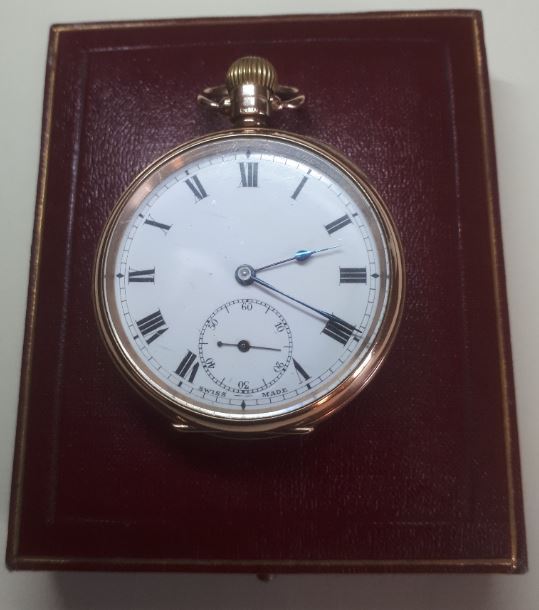
Sir John Bennett
Sir John Bennett (1814 – 1897) was one of the most flamboyant characters in British horology history and, in many aspects one of the most advanced. He greatly championed the Swiss methods of manufacture where parts were interchangeable rather than being made for each specific watch. He gave lecture tours where he would express his opinions on the superiority of Swiss timepieces. This put him in conflict with many of his contemporaries who preferred the established methods of manufacture. It was even said that the establishment of the British Horological Institute was designed to protect traditional watchmakers from the revolutionary ideas of Bennett.
Despite his controversial reputation, the quality of Bennett’s timepieces is not in question. Although he was a qualified watchmaker, he was primarily involved in the retail side of the business selling, high-quality, Bennett branded Swiss and English watches. Bennett died in 1897, but the business continued to operate under his name. The shop was eventually put up for sale in the late 1920s and the business closed.
I returned to the jewellery store, armed with my newfound knowledge and a better understanding of price. The shop was closing imminently and the jeweller was going to be forced to scrap the watch, so I was able to negotiate a price that was well below the marked price. Even, better it was purchased for me by my wife as a birthday present.
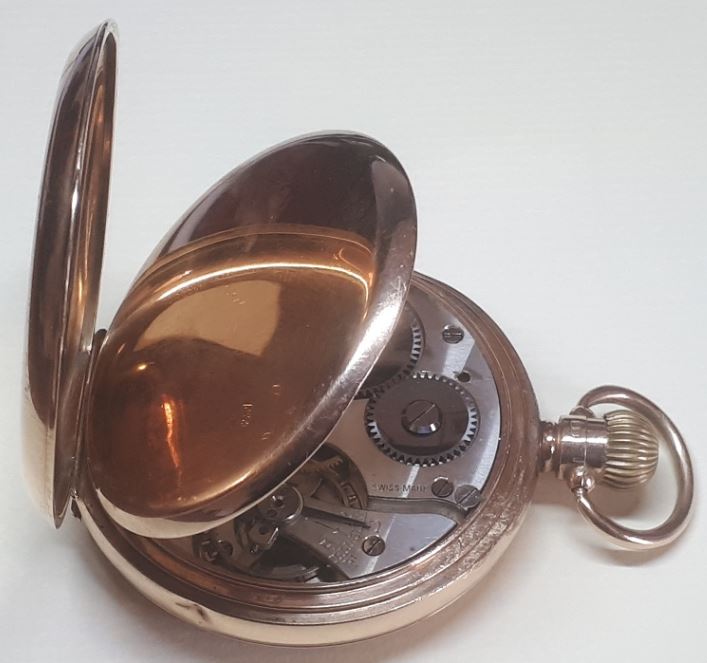
The antique pocket watch
The watch itself is an open-faced pocket watch with a stem-wind, stem-set movement. The case is 9ct rose gold and there are hallmarks inside both of the case backs for London 1920 with a maker’s mark for Sir John Bennett. The case is in very nice condition with only a few signs of wear, as you would expect from an antique pocket watch. I actually like the subtle signs of wear as it proves I’m not the first owner of this watch and probably won’t be the last. The watch glass is in good condition with scratches that are not visible to the naked eye. Likewise, the dial is crisp, and you need a jeweller’s loupe to spot any imperfections.
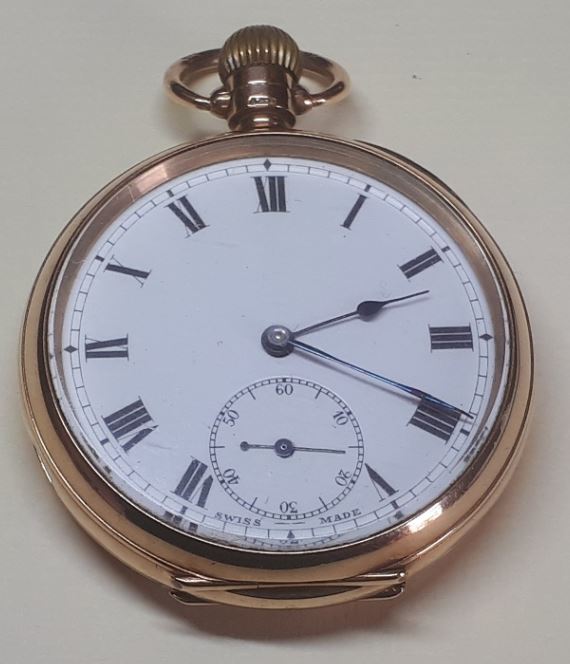
Movement
Both the outer case back and the inner dust cover open easily and they shut with a crisp, satisfying clip. Inside the covers is the lever movement marked as Swiss made with 15 jewels. Additionally, there is a regulator above the balance mechanism which can be used to make fine timekeeping adjustments. The regulator has 2 vertical pins which straddle the hairspring and can be adjusted to make the effective length of the spring longer or shorter, resulting in changes to the rate of the watch.
The regulator is marked “F” and “S” and “A” and “R”. Overall, the movement is clean and free of any damage. I’m not yet at the stage where I can pull apart the movement to determine exactly who it was made by. Actually, that bit is probably not true. I could certainly pull it apart. However, it’s putting it back together again that might be the problem.
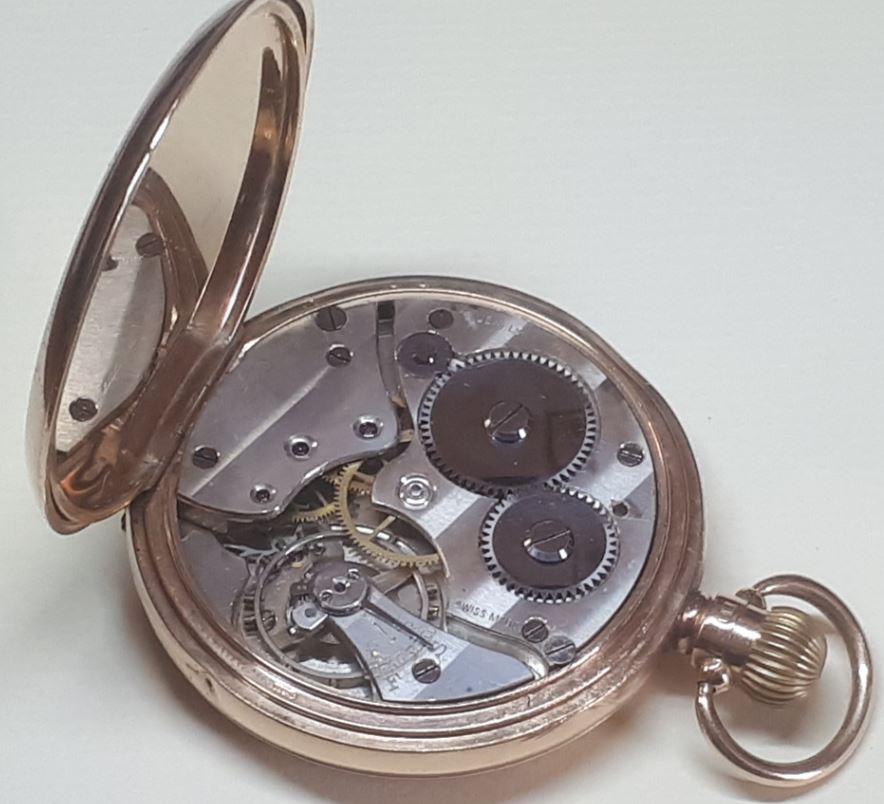
The watch is sitting in its case, on the desk, as I type. I can hear it ticking loudly, which is something I really like about these antique pocket watches, they have character. My modern Swiss automatic is on my wrist and I have to lift it to my ear to hear the faintest of ticks. These old watches have a tactile quality as well, they have weight and there is the daily ritual of winding the watch. It’s not a set and forget automatic.
Albert watch chain
The watch is on a single rose gold Albert chain weighing in at 16g and 21cm in length. The chain was bought separately from a dealer in Hatton Garden. My loupe is unfortunately not powerful enough for me to clearly make out the hallmarks on the t-bar. I will update this at a later date.
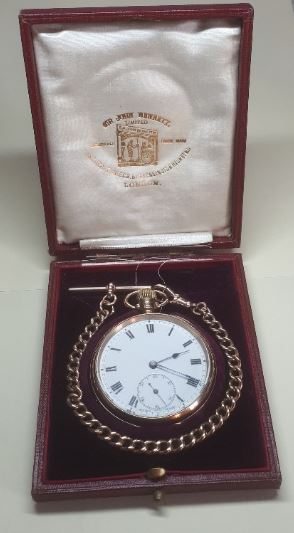
The watch keeps good time, losing about two minutes a day and lasts just over twenty-four hours on a full wind. This Sir John Bennett pocket watch is a beautiful timepiece and it has inspired me to collect other antique watches. As per my other watches, this one is on rotation and one of them will get worn whenever I wear a waistcoat.

A beautiful watch indeed, and a great personal story behind it! I’m sure you will enjoy it each time its turn comes around to be used!